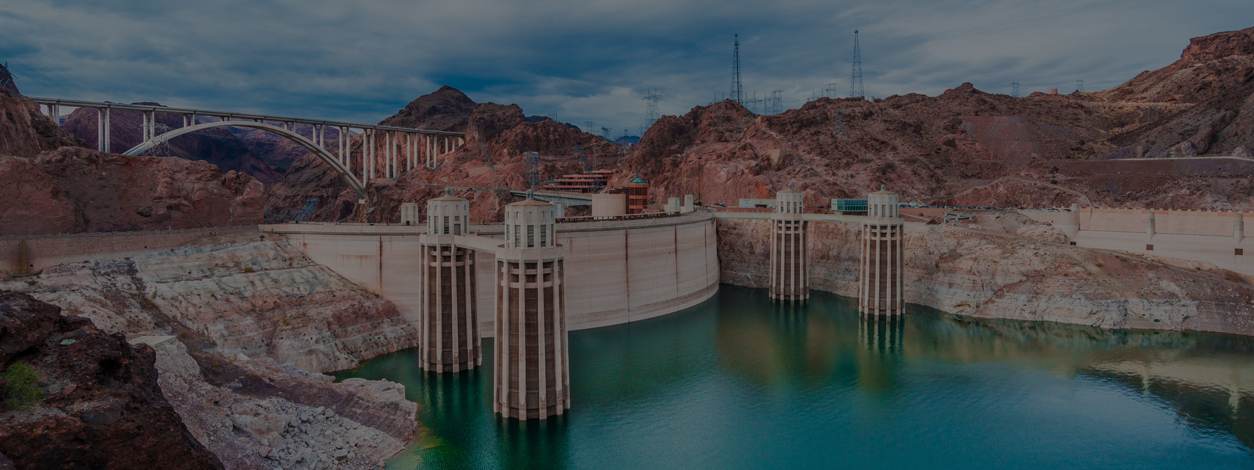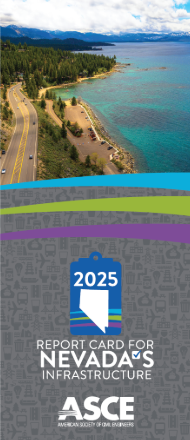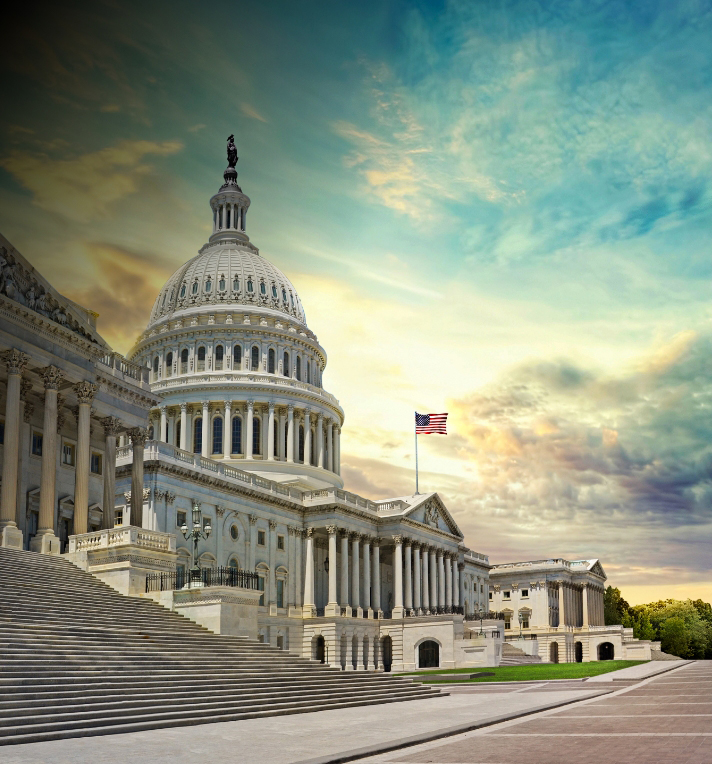2025 Nevada Infrastructure Report Card
2025 Report Card GPA: C+
As Nevada grows, the existing infrastructure is becoming taxed, and new facilities are needed across the entire state. Geographically, Nevada is the seventh largest state in land area, but 32nd largest in population, with over 90% of the state’s residents in Las Vegas and Reno. Furthermore, 90% of the state is considered rural and over 80% of the land is owned by the Federal government. Nevada is also one of the driest states in the country, with annual rainfall of five inches or less, meaning a majority of the state’s water supply is dependent on snowmelt from mountain ranges within Nevada and neighboring states. The state’s largest city, Las Vegas, has grown rapidly over the past 25 years, meaning the city tends to house some of the state’s newest infrastructure systems and has a larger share of infrastructure versus other areas of the state. In contrast, other areas, including Reno, Elko, Ely and Tonopah, are home to older and aging infrastructure systems. However, these areas are also steadily growing and require both new construction and regular maintenance to keep up with the community’s needs.
The 2025 Report Card on Nevada’s Infrastructure is the fourth edition developed by ASCE’s Nevada Section since 2007. This report covers eight categories – Aviation, Bridges, Dams, Drinking Water, Energy, Public Parks, Roads, and Wastewater. We are pleased to report an improvement in Nevada’s infrastructure from a C in 2018 to a C+ in 2025.
Read the executive summary here.
-
Explore Nevada
- Grades
- State Fact Sheet
- IIJA Grants
Nevada Infrastructure Grades
A: Exceptional, B: Good, C: Mediocre, D: Poor, F: Failing
Each category was evaluated on the basis of capacity, condition, funding, future need, operation and maintenance, public safety, resilience, and innovation
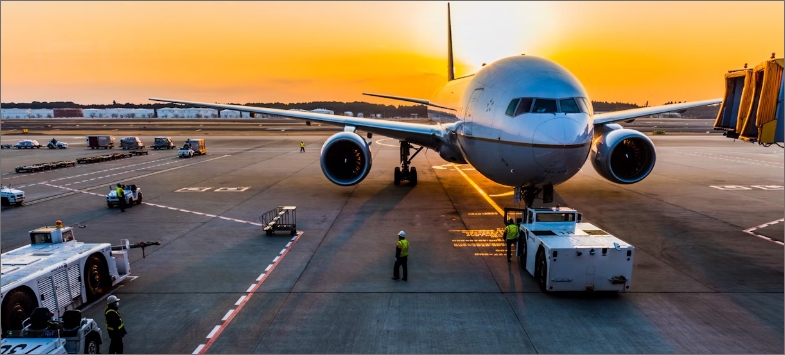

Aviation
Nevada’s economy relies heavily on tourism, and most visitors use air travel to visit the state. Efficiently functioning airports are essential to keep the state thriving. The COVID-19 pandemic seriously impacted air travel in Nevada, with effects across the economy and airlines in the state. Air travel to Nevada didn’t recover until 2022, when numerous international airlines resumed service to the state.
In 2024, over 60 million passengers utilized Nevada’s largest airports – the Reno-Tahoe International Airport and Harry Reid International Airport in Las Vegas – placing a heavy strain on existing facilities and requiring constant maintenance. To accommodate current and future passenger volumes, Reid expanded the Henderson Executive Airport and will be starting an environmental analysis for the Southern Nevada Supplemental Airport (SNSA). Reno-Tahoe is in the middle of a $1.6 billion expansion and improvement program, MoreRNO, which broke ground in 2019. Nevada’s general aviation airports received over $27 million in Federal Aviation Administration (FAA) Airport Improvement Program (AIP) grants in 2024 and also receive state apportionment and discretionary funding from the FAA. Nevada airports also have access to matching funds through the Nevada State Infrastructure Bank.
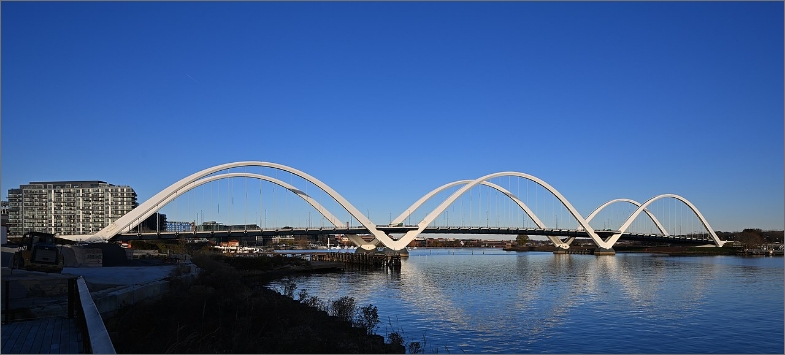

Bridges
With only 1.5% of Nevada’s 2,128 bridges rated as structurally deficient, the network is one of the best in the country. However, 26% of the bridges in the state are over 50 years old and another 12% will reach their 50-year design life by 2030. Older bridges are often costlier to maintain and will eventually require replacement. Meanwhile, available funding is insufficient to address future needs. Nevada spends approximately $17 million per biennium on bridge preservation, with revenue from a combination of federal funds, fuel taxes, and registration fees. Nevada’s current backlog of bridge preservation work, such as corrective maintenance, rehabilitation, and replacement, is approximately $133 million.
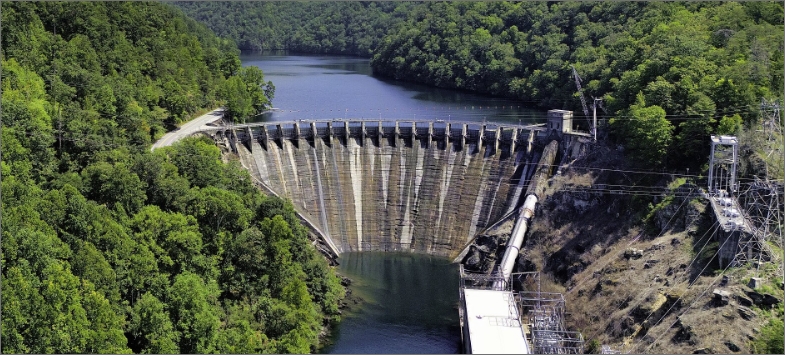

Dams
There are 673 state regulated dams in Nevada, 508 of which are accounted for in the U.S. Army Corps of Engineers’ National Inventory of Dams (NID). Approximately 94 percent of the state regulated high-hazard dams have an Emergency Action Plan (EAP) in place. According to the NID, about 66 % of these dams were given a Satisfactory or Fair condition assessment. Approximately 30 % of these dams were rated as being in Poor or Unsatisfactory condition. Unfortunately, when considering services like inspections, laws, and EAPs, the dam safety budget for high hazard potential dams is approximately half of the national average. Additionally, there are about half as many agency employees per high-hazard dam as there are nationwide.


Drinking Water
As with many western states, water is a critical resource. While conservation programs in Nevada are some of the most effective in the country, supply is only one part of the equation. Rapid population growth in Nevada has remained constant for the past several decades and it is projected to continue. The 7th Drinking Water Infrastructure Needs Survey and Assessment issued by the Environmental Protection Agency (EPA) reported that Nevada will require $6.4 billion for water system improvements over the next twenty years, nearly two thirds of which will be needed for distribution and transmission projects.
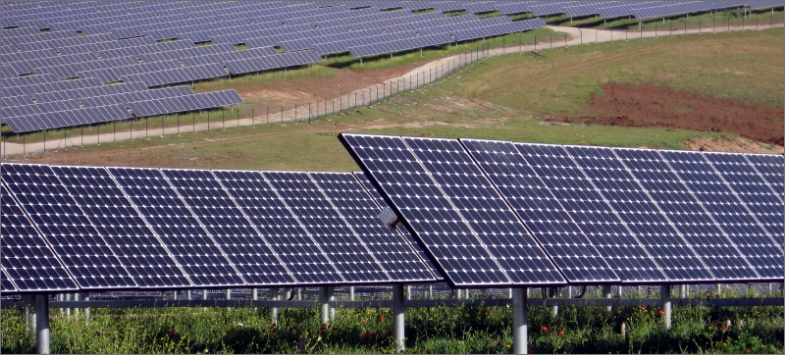

Energy
Nevada’s current energy needs are being met, but dependence on outside resources is substantial. Greenhouse gas emissions are significant and declining slowly. The prominent power utility, NV Energy, generates, transmits, and distributes about 90% of the state’s electrical power, serving more than 1.3 million customers and tens of millions of visitors annually. Nevada has adopted a Renewable Portfolio Standard which mandates that a significant fraction of electricity sold to retail customers come from renewables but it stops short of the global goal of reaching net-zero emissions by 2050. Nevada has a high solar insolation, which has led to lower costs for solar power generation and for the state to rapidly expand solar infrastructure. Meanwhile, Nevada has been ranked first nationally for installed geothermal per capita, with more capacity in development. Looking ahead, Nevada should facilitate more in-state capacity to generate electricity using renewables, reduce dependence on coal and natural gas, continue to develop and harden transmission systems, incentivize improvements in energy efficiency, and promote low-carbon means of transportation to ensure that the state’s energy demands can keep pace with capacity.
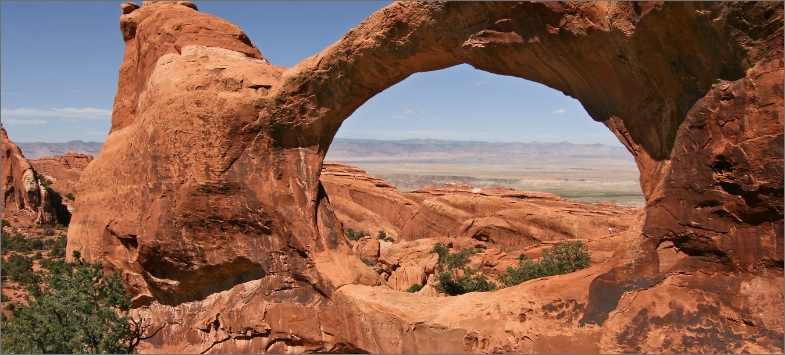

Public Parks
At 70.8 million acres, Nevada is the sixth largest state in the contiguous US, and with approximately 60 million acres of land owned by federal, state, and local governments, it is #1 in the contiguous US for both total and percentage of publicly owned “parkland.” Even with a steadily increasing population, the per capita ratio of public land is more than 18 acres per resident. Nevada’s protected parkland area has also increased, with over one million acres of dedicated conservations within the past few years. However, the increasing popularity of adventure tourism on top of growing resident populations has increased the demand for Nevada’s parks. When coupled with more extreme climate conditions and the disproportionate rise in inflation relative to budget revenue, Nevada’s park managers are becoming increasingly strained. As a result, funding for rehabilitating Nevada’s existing recreation areas and new facilities to serve growing populations will continue to be the main challenge for local, state, and federal agencies that own and operate parks in Nevada.


Roads
There are over 48,000 miles of roadway in Nevada according to the U.S. Department of Transportation, with 60% percent of these roads in good or fair condition and 20% percent considered in poor condition. Driving on deteriorating roads costs Nevada motorists $1.2 billion a year, equivalent to $576 per driver. The Infrastructure Investment and Jobs Act (IIJA), signed into law in November 2021, provided $2.8 billion for highway and bridge investments in Nevada through 2026, representing a 39% funding increase. Federal funds currently support 55% of the state’s transportation department spending on highway and bridge improvements.
However, the Federal Highway Administration’s (FHWA) National Highway Construction Cost Index (NHCCI), which measures labor and materials costs, increased by 28% during the first three quarters of 2022. Due to inflation and the increased use of electric vehicles (EVs) which do not pay a state gas tax, Nevada will need to consider long term funding solutions, as current road funding heavily relies on the state’s 23.8 cent gas tax.
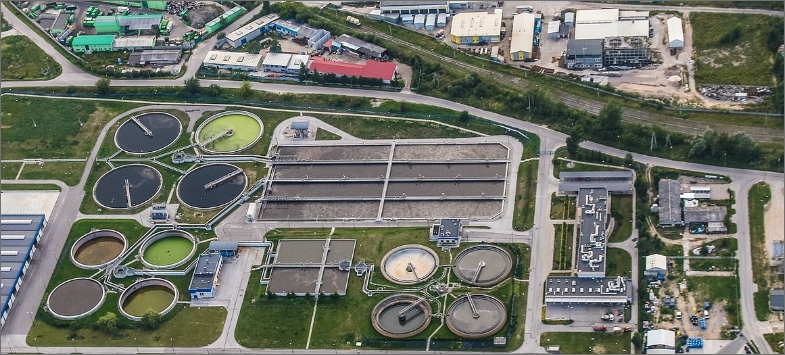

Wastewater
Since Nevada is the driest state in the nation, water and water treatment have been prime factors in determining future growth potential for the state. Approximately 6,775 miles of sewer pipeline in Nevada connects to 50 different wastewater treatment facilities. Many of Nevada’s collection systems are relatively new compared to other states. While most of Nevada’s population is concentrated in the Reno and Las Vegas, metropolitan areas are served by few facilities, with the majority of wastewater treatment facilities in Nevada serving rural communities. Federal grants and loans have leveraged state and local funds to upgrade facilities. The Environmental Protection Agency reported in 2012 that wastewater projects in Nevada required approximately $3.08 billion, down from $3.3 billion in 2008.
State Fact Sheet
Download Fact Sheet
Aviation
$27.4 million in 2024 airport improvement grants across 3 major airports

Drinking Water
$6.4 billion total drinking water need

Transit
57.7 million passenger trips across 21 systems in 2023

Bridges
2,099 bridges, 1.1% of which were structurally deficient in 2024

Hazardous Waste
3 Superfund sites

Wastewater
$518 million total wastewater need

Dams
161 high hazard dams

Levees
82 miles of levees protect 2,436 residents.

Roads
34% of roads are in poor or fair condition

Connect with Your Legislators
Let everyone know how important it is that we continue to invest in the future of America’s infrastructure.
Take Action Today
